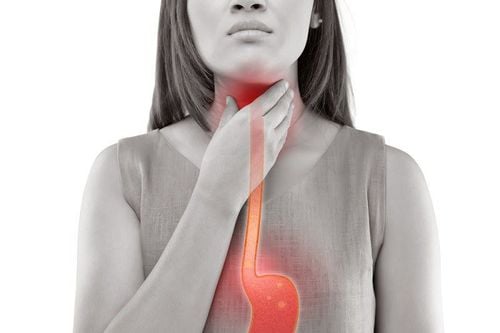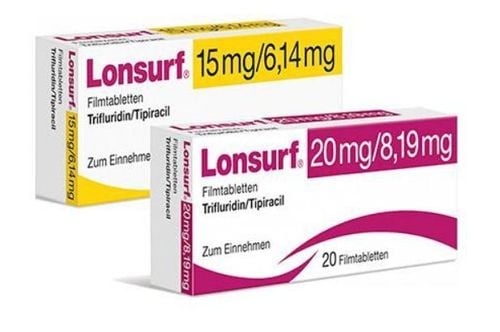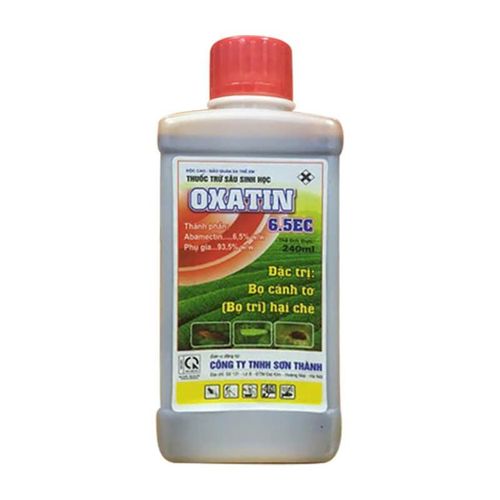This is an automatically translated article.
Posted by Master, Doctor Mai Vien Phuong - Department of Examination & Internal Medicine - Vinmec Central Park International General Hospital.From early to late stage stomach cancer is divided into 5 levels, depending on the size of the tumor and the ability of cancer cells to spread. The incidence of gastric cancer varies widely geographically, with high incidence in eastern parts of Asia and Europe, but rare in North America and Western Europe.
1. Stomach cancer is a global disease
Gastric cancer (GC) is the 5th most common cancer worldwide, after lung, breast, prostate and colon cancers. It accounts for about 8% of all cancers and 10% of cancer-related deaths.
The distribution of gastric cancer is wide but occurs mainly (>70%) in developing countries with East Asia, Korea, Japan and China being high endemic areas. The prevalence of the disease within a region/country is also different as in China and India it is higher than in the Northeastern and Southern countries.
2. Frequency of stomach cancer in the world
China China accounts for 42% of stomach cancer cases worldwide. The prevalence of the disease among adolescents and young adults in Shanghai is increasing, which is believed to be related to the consumption of salted pork foods containing H. pylori bacteria.
In Shandong Province, nutritional deficiencies from childhood to adolescence during the famine (1959–1961) may play a role in the risk of stomach cancer. Exposure to starvation in early life causes gastric mucosal damage leading to colonization of carcinogens (H. pylori, N-nitrosamine and acetaldehyde) along with mutations.
The use of refrigerators for food preservation, improved hygiene, and antibiotics are all factors that significantly reduce chronic H. pylori infection, which is the strongest risk factor. Stomach cancer risk increased by 50% in people consuming pickled vegetables/foods suggesting the existence of causes other than H. pylori. Eating more cruciferous vegetables has been found to be protective against non-cardiovascular stomach cancers. However, the incidence is projected to increase over the next 40 years as a result of population growth and aging.

Japan Stomach cancer is the second most frequently diagnosed disease, after colorectal cancer, and the second leading cause of cancer death (15%) in Japan. The highest mortality rates were seen among those born in the late 19th century and among women, at higher risk than in the US, UK, France and South Korea.
Environmental factors, including diet and H. pylori infection are major risk factors. The protective role of green tea, the most commonly consumed beverage worldwide, is controversial. The rate of H. pylori negative gastric cancer infection in Japan is less than 1%. The synergistic effect of vitamin A intake and H. pylori infection on gastric mucosal malignant changes through oxidative stress is recognized. Reducing vitamin A intake along with eradicating H. pylori may be an effective strategy to reduce the risk of early as well as other gastric cancer.
Korea In Korea, it is the most frequently diagnosed cancer in men and the 4th in women, after thyroid cancer, breast cancer and colorectal cancer. The incidence increases gradually with age and is rarely under 30 years of age; the mortality rate was 28.5 in men and 15.7 in women (per 100,000) in 2012. However, the 5-year survival rate has increased significantly from 43.0% to 63.8% in men and 42 .6% to 61.6% in women since 1995.
The rate of H. pylori negative cancer is stronger than 5.4% in Korea. The prevalence of obesity is increasing in heart-stomach cancer patients. Kidney transplant patients have a higher risk of stomach cancer, and Epstein-Barr virus (EBV) is a more major pathogen than H. pylori. The high prevalence of autoimmune gastritis (40.7%) with intestinal metaplasia (12.5%) is a major histological risk factor. Autoimmune gastritis, host, and environmental factors such as increased consumption of dairy products have been identified as risk factors for intestinal metaplasia.
India In India, stomach cancer is the leading cause of cancer death in men after lung; with a mortality rate of 11.4%. The highest incidence is in the Northeast regions. The age-related risk (AAR) of the Bhutia population in Sikkim (60.4 in men and 29.4 in women per 100000) was the highest among population-based Cancer Registry in India as of 2010 , the highest in the world. The age-adjusted incidence of the disease in men was highest in the Chennai registry in South India (11.1 per 100000) during 2003-2005. The state of Jammu and Kashmir has a high incidence of gastrointestinal cancers, accounting for about 50% of all cancers. Stomach cancer is one of the top five cancers in the valley, with a male:female ratio of 3.1:1.
Although the prevalence of H. pylori infection is very high, the incidence of stomach cancer is low in India and Africa, it is a paradox, often referred to as the India/Africa mystery. The protective role of diet (curcumin in turmeric), host inflammatory polymorphisms (IL-1), differences in bacterial strains, and predominant immune responses (Th 2 protection) compared with Th 1) are the explanations.
Although H. pylori infection is responsible for at least 80% of cases and other factors include diet, lifestyle, especially tobacco use, socioeconomic conditions and genetics transmission, has a significant role. Other suspected causes include overeating pickles, rice, foods at high temperatures, dried salted meats and fish, and overuse of baking soda, spices, and chili peppers. Certain occupations exposed to high temperatures and dusty environments (miners, farmers, cooks, machinery operators in the wood and rubber industries) increase the risk of stomach cancer, especially stomach cancer. diffuse adenocarcinoma. The incidence of the disease has been on a decreasing trend over the past decades, in line with the global context.

Europe Stomach cancer is the 5th most common cancer in men and 7th in women with a male:female ratio of 1.5:1 in Europe. There is a fourfold difference in incidence between countries in the European Union with the highest incidence and mortality rates in Belarus, Albania and the Russian Federation. Belarus for men and Albania for women mark the regions with the highest incidence. Central and Eastern European countries have a higher incidence of the disease than Western or Nordic countries. Sweden has the lowest incidence and this rate in the UK is lower than the EU average.
A significant association between alcohol consumption and the risk of stomach cancer was seen in Lithuania, accounting for about 8% of all cases. The explanation could be the presence of contaminants such as acetaldehyde, a human carcinogen. Similar to the worldwide trend, the incidence of noncardiac gastric cancer has decreased as a result of improved socioeconomic conditions and, consequently, a decrease in the prevalence of H. Pylori infection in the younger population. Furthermore, H. pylori eradication therapy has increased morbidity and mortality.
Finland Finland has a higher incidence of stomach cancer than other Scandinavian countries. It is the sixth most common cause of cancer death in men and the seventh in women. Increased salt intake, reduced fruit and vegetable consumption, and alcoholism were notable associations unrelated to high coffee consumption. The high prevalence of H. pylori infection in lower socioeconomic classes is strongly associated with an increased incidence of distant tumours. The need for rapid eradication of H. pylori with appropriate monitoring in patients with precancerous lesions is underlined. Endogenous infection, heavy alcohol consumption, and smoking, together with decreased ALDh3 status, pose the greatest risk for gastric cancer.
USA Stomach cancer in the United States ranks fifteenth in incidence and fourteenth in mortality. There has been an increasing trend in the incidence of gastroesophageal reflux disease and gastro-oesophageal cancer over the past 50 years. The incidence of stomach cancer in whites is about half that of Asian Americans, Paci Islanders, African Americans, and Hispanics. This ethnic disparity may be due to migration from endemic areas. The increased incidence in the Hispanic population is attributed to the high prevalence of H. pylori infection. Increasing age, non-Caucasian ethnicity, low educational attainment, and low-income groups are factors other than H. pylori causing distant tumours. Distant tumors are common on the east coast, major urban centers, and teaching hospitals. The overall incidence of stomach cancer is decreasing. The cause of the slight increase in the young population (25-39 years) is still not well understood.
South America The distribution of stomach cancer varies widely in this continent. Incidence is higher on the West Coast than in the Caribbean, Amazon and the East Coast, while mortality is highest in the mountainous regions (along the Pacific coast). The incidence in Peru, the country with the largest Native American population in the region, is about five times that of the United States and twice that of Brazil, and accounts for the highest death rate among cancers.
Brazil has a very high incidence with an estimated risk of 13 and 6 new cases (per 100,000) in men and women. The prevalence of conditions favorable for H. pylori infection i.e. poor sanitation, overcrowding and dietary factors such as reduced fruit and vegetable intake along with limited access refrigerators are possible factors.
High-altitude regions such as Columbia have higher rates of gastric cancer incidence and mortality, which may be due to a combination of genetic risk factors and H. pylori strains. Inappropriate dietary practices such as increased intake of processed meat and environmental conditions also contribute to this. In Uruguay, drinking maté (a caffeine-rich concoction) was associated with an increased risk of upper gastrointestinal cancer.
Although the incidence has decreased, there are reports of an increase of about 300% for proximal tumors as well as for diffuse adenocarcinoma in some parts of the continent. However, the incidence of stomach cancer is predicted to increase in the coming years.
Chile It is the second most common cancer in men and sixth in women in Chile. The incidence and mortality from gastric cancer is among the highest in the world. Higher prevalence of infection with virulent strains of H. pylori (with cagA, vacA and babA2 genes) together with poverty, poor sanitation, high alcohol consumption, smoking, and reduced fruit and vegetable consumption contribute to burden despite recent socioeconomic advances.
Iran Stomach cancer is the most common cancer in men, third in women, and the most common cause of cancer death in Iran. Incidence in the past decades has slowed down with the relative increase of proximal tumors.
The geographical distribution varies between regions with a high prevalence in the Northern and Northwestern parts (along the Caspian Sea border) compared to the Persian Gulf and desert areas. Persians and Arabs with better socioeconomic conditions colonized deserts including the Persian Gulf, which explains the decrease in disease incidence in these areas. Consumption of smoked fish in coastal areas, smoking, high salt intake, increased prevalence of H. pylori infection, poor socioeconomic status and genetic predisposition are responsible for the high prevalence. 88.89 selenium levels were much lower in residents living in endemic areas with an inverse association with stomach cancer. Unlike other parts of the world, endemic areas in Iran have a predominant rate of gastric cancer. Overall, the prevalence of the disease is decreasing. GIST and gastric lymphoma will be discussed in another article in this series.
3. Can early stage stomach cancer be curable?
If you are diagnosed with stomach cancer, the first thing that comes to mind and wants the answer is “is stomach cancer curable? ". Accordingly, depending on the size of the tumor and the extent of metastasis of the cancer cells, the complete cure rate will be based on that. Usually, early stage stomach cancer is curable. However, people often find stomach cancer at the end stage, complicated and serious process, the survival rate of patients is also very low.
Currently, early cancer screening is considered the perfect measure in the timely detection and treatment of all types of cancer. Reduce treatment costs and especially reduce patient mortality. Vinmec International General Hospital always deploys and introduces to customers the Early Cancer Screening Package at Vinmec - Peace of mind to live well to help with gene testing, imaging, testing of biomarkers to detect tumors you early.
Choosing the Early Cancer Screening Package at Vinmec - Peace of mind at Vinmec, customers will get:
Only one gene test can assess the risk of 16 common cancers in both men and women ( Lung cancer, colorectal cancer, breast cancer, pancreatic cancer, cervical cancer, stomach cancer, prostate cancer,...). Early detection of early signs of cancer through imaging, endoscopy and ultrasound. The examination is simple, careful and precise. A team of well-trained specialists, especially in oncology, are capable of handling cancer cases. With a system of facilities, advanced and modern medical equipment and a team of doctors with deep expertise and experience, it will help the examination and treatment process of patients at Vinmec become faster with High efficiency, save cost and time.
Please dial HOTLINE for more information or register for an appointment HERE. Download MyVinmec app to make appointments faster and to manage your bookings easily.














